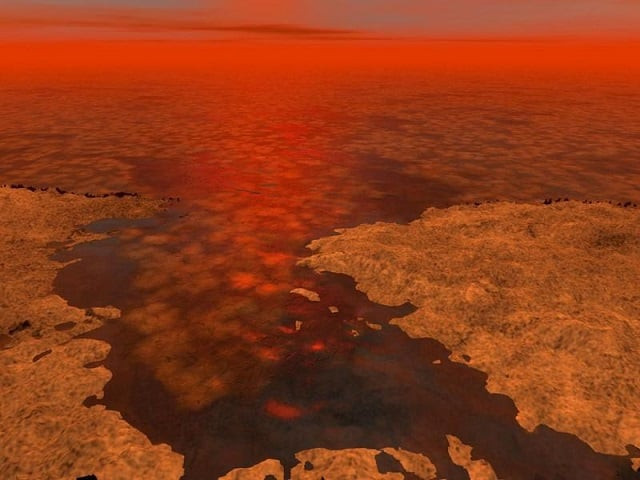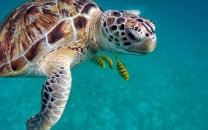'Possibility of life': scientists map Saturn's exotic moon Titan
Titan, with a diameter of 3,200 miles, is the solar system’s second-biggest moon behind Jupiter’s Ganymede

This artist's concept envisions what hydrocarbon ice forming on a liquid hydrocarbon sea of Saturn's moon Titan might look like in this NASA image released on January 8, 2013. PHOTO: REUTERS
Titan, with a diameter of 3,200 miles (5,150 km), is the solar system’s second-biggest moon behind Jupiter’s Ganymede. It is larger than the planet Mercury.
Organic materials - carbon-based compounds critical for fostering living organisms - play a leading role on Titan.
“Organics are very important for the possibility of life on Titan, which many of us think likely would have evolved in the liquid water ocean under Titan’s icy crust,” said planetary geologist Rosaly Lopes of NASA’s Jet Propulsion Laboratory in California.
“Organic materials can, we think, penetrate down to the liquid water ocean and this can provide nutrients necessary for life if it evolved there,” added Lopes, who led the research published in the journal Nature Astronomy.
On Earth, water rains down from clouds and fills rivers, lakes, and oceans. On Titan, clouds spew hydrocarbons like methane and ethane - which are gases on Earth - in liquid form due to the moon’s frigid climate.
Rainfall occurs everywhere on Titan, but the equatorial regions are drier than the poles, said study co-author Anezina Solomonidou, a European Space Agency research fellow.
Plains (covering 65% of the surface) and dunes (covering 17% of the surface) made up of frozen bits of methane and other hydrocarbons dominate Titan’s mid-latitudes and equatorial regions, respectively.
Titan is the only solar system object other than Earth boasting stable liquids on the surface, with lakes and seas of full of methane being major features at its polar regions. Hilly and mountainous areas, thought to represent exposed portions of Titan’s crust of water ice, represent 14% of the surface.
“What is really fun to think about is if there are many ways that those more complex organics can go down and mix with water in the deep icy crust or deep subsurface ocean,” JPL scientist and study co-author Michael Malaska said.
Noting that on Earth there is a bacterium that can survive just on a hydrocarbon called acetylene and water, Malaska asked, “Could it or something like it live in Titan deep in the crust or ocean where temperatures are a little warmer?”
The map was created seven years before the US space agency is set to launch its Dragonfly mission to dispatch a multi-rotor drone to study Titan’s chemistry and suitability for life. Dragonfly is scheduled to reach Titan in 2034.
“It is not only scientifically important but also really cool - a drone flying around on Titan,” Lopes said. “It will be really exciting.”



















COMMENTS
Comments are moderated and generally will be posted if they are on-topic and not abusive.
For more information, please see our Comments FAQ